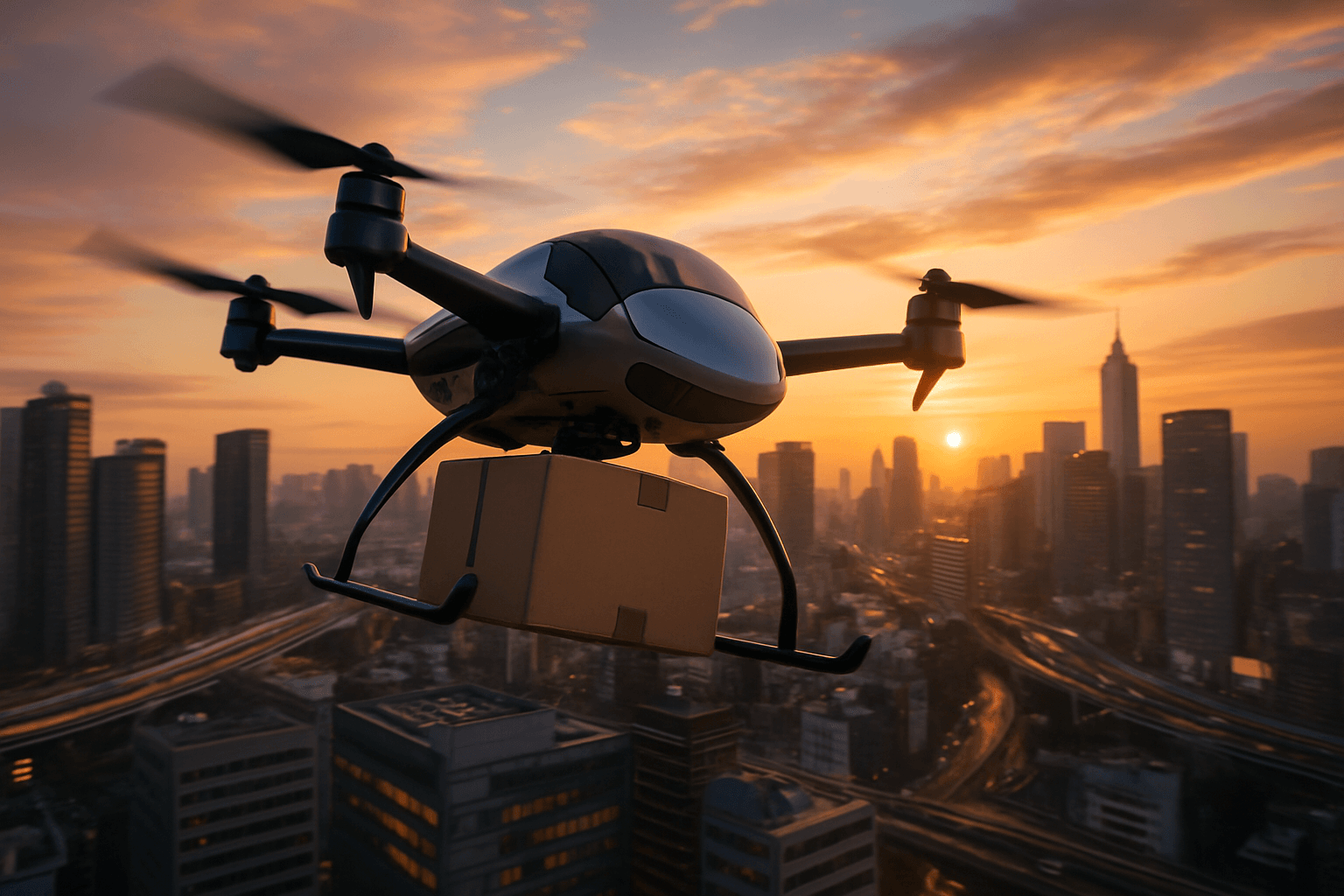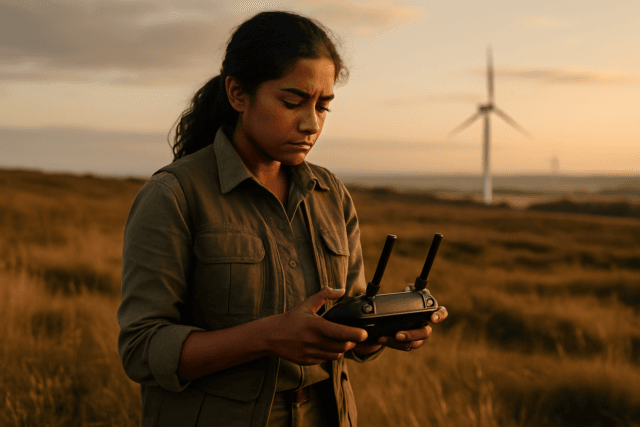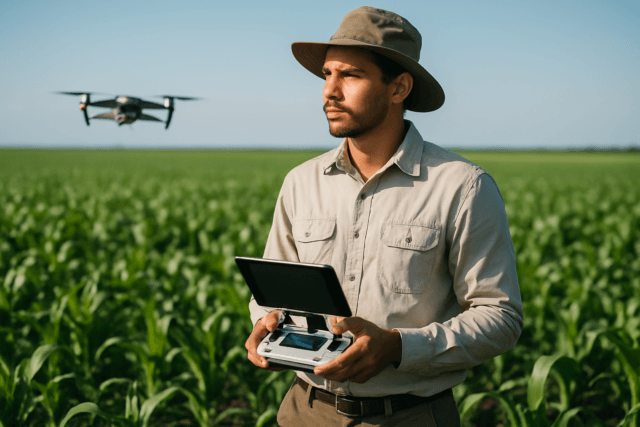Drone delivery services are rapidly evolving, promising faster, cheaper, and more accessible delivery options. From delivering life-saving medical supplies to satisfying your cravings with a late-night snack, drones are poised to revolutionize various industries. However, the path to widespread drone delivery is not without its challenges. This article explores the current state of drone delivery services, examining their benefits, drawbacks, and the regulatory landscape shaping their future.
What is Drone Delivery?
Drone delivery involves using unmanned aerial vehicles (UAVs), or drones, to transport goods from a sender to a recipient. These drones are typically powered by electric batteries and can be remotely controlled or programmed to fly autonomously using software-controlled flight plans. Drone delivery services aim to provide a faster, more efficient, and cost-effective alternative to traditional delivery methods, especially for last-mile delivery.
The Rise of Drone Delivery: A Timeline
- Early stages: Drones were initially associated with military and recreational use, but their potential in logistics began to gain attention in the early 2010s.
- 2013: Amazon announces its plans for “Prime Air,” a drone delivery service, sparking widespread interest and investment in the field.
- 2016: Zipline begins using drones to deliver medical supplies in Rwanda, demonstrating the life-saving potential of drone delivery in remote areas.
- 2019: The popularity of drone deliveries soars, driven by the COVID-19 pandemic and the need for contactless delivery options.
- 2022: The global number of package deliveries by drones increases by more than 80%, reaching almost 875,000 shipments worldwide.
- 2023: McKinsey reports over 800,000 paid commercial drone deliveries globally. Amazon receives approval from the FAA to fly drones.
- 2024: Drone delivery services continue to expand, with companies like Wing launching commercial delivery services in major US metropolitan areas.
- 2026 (Projected): New UK regulations planned for 2026 may allow drones to be used for NHS deliveries, enabling flights beyond the visual line of sight.
Advantages of Drone Delivery
Drone delivery services offer a multitude of benefits over traditional delivery methods:
- Faster Delivery: Drones can navigate around traffic and other obstacles, delivering packages directly to customers’ homes or businesses in a fraction of the time. This is particularly useful for urgent or time-sensitive deliveries, such as prescription medications or emergency supplies.
- Reduced Costs: Drones can reduce labor costs, fuel consumption, and vehicle maintenance expenses, making them a more cost-effective delivery solution. Operating costs for drone delivery can be 40% to 70% lower than traditional vehicle delivery services.
- Increased Accessibility: Drones can access remote and rural areas that may lack the infrastructure required for traditional delivery vehicles. This can significantly improve service efficiency and cost-effectiveness in areas where traditional last-mile deliveries struggle.
- Reduced Emissions: Drones are typically powered by electricity, which can reduce transportation emissions and help countries meet emissions targets set in global agreements.
- Improved Efficiency: Drones can operate 24/7 and use smart algorithms to plan efficient delivery routes, considering traffic, weather, and delivery priorities.
- Safer Delivery: Drones can reduce the risk of accidents and injuries associated with traditional delivery methods, such as traffic collisions or delivery personnel working in hazardous conditions.
Disadvantages and Challenges of Drone Delivery
Despite the numerous advantages, drone delivery services also face several challenges:
- Regulatory Hurdles: Existing regulations often restrict drone operations, particularly flights beyond visual line of sight (BVLOS) and over densely populated areas. Compliance with these regulations can be complex and time-consuming.
- Safety Concerns: Drone flights over populated areas pose increased safety risks, and there are concerns about potential accidents or malfunctions. Ensuring the safety of pedestrians, property, and other aircraft is crucial.
- Security Risks: Drones are vulnerable to hacking and theft, which could compromise the security of the delivery system and pose a threat to public safety. Protecting drone systems from cyberattacks and ensuring data security are essential.
- Privacy Issues: Drones equipped with cameras can raise privacy concerns, as they may capture images of people and properties unrelated to the delivery. Balancing the benefits of drone delivery with the need to protect individual privacy is a key challenge.
- Logistical Issues: Drone delivery can pose logistical challenges, especially in densely populated areas where maneuvering around buildings and other obstacles can be difficult. Delivering packages to specific apartments or navigating complex urban environments may require human intervention.
- Weather Limitations: Drone operations are often limited by weather conditions such as rain, wind, and snow. Adverse weather can affect drone performance, safety, and delivery schedules.
- Public Acceptance: Some consumers are still hesitant to accept drone deliveries due to concerns about safety, security, and privacy. Gaining public trust and addressing these concerns is crucial for widespread adoption.
- Limited Payload Capacity: Most drones have a limited payload capacity, restricting the size and weight of packages they can carry. This may limit the types of goods that can be delivered by drone.
- Infrastructure Requirements: Establishing drone delivery services requires significant investment in infrastructure, including drone launch pads, battery charging facilities, and air traffic management systems.
Key Players in the Drone Delivery Market
Several companies are actively involved in developing and deploying drone delivery services:
- Wing: A subsidiary of Google’s parent company, Alphabet, Wing operates in Australia and the United States, delivering packages and groceries from local stores.
- Amazon Prime Air: Amazon is testing drone deliveries in California and Texas and has received approval from the FAA to fly drones.
- Zipline: Zipline focuses on delivering medical supplies and has completed over a million safe, commercial deliveries worldwide.
- Flytrex: Flytrex is another drone delivery company operating in the United States, focusing on food and retail deliveries.
- Manna Drone Delivery: Based in Ireland, Manna transports food, coffee, medical supplies, and other items to customers.
- UPS Flight Forward: UPS has focused on using drones to deliver medical supplies, quickly transporting drugs and medical samples.
- DroneUp: DroneUp provides drone delivery services for various industries, including retail and healthcare.
- Skyports Drone Services: Skyports Drone Services provides drone deliveries and inspections, operating in 13 countries.
- TSAW Drones: TSAW Drones, an Indian company, offers on-demand drone logistics solutions for healthcare, housing societies, and other urgent deliveries.
- Skye Air: Skye Air provides affordable and fast drone delivery services for online orders in India.
Drone Delivery in the UK: Regulations and Future Prospects
The UK is actively exploring the potential of drone delivery services, with the government investing in regulatory frameworks and supporting industry innovation. However, several challenges need to be addressed before widespread drone delivery can become a reality.
Current Regulations
In the UK, drone operations are governed by the Civil Aviation Authority (CAA) and are subject to regulations outlined in the Air Navigation Order 2016 and UK Regulation (EU) 2018/1139. Key regulations include:
- Distance: Drones must be flown below 120m/400 ft.
- Line of Sight: The drone must be within the operator’s line of sight.
- Proximity: Drones must not be flown closer than 50m to any person, vehicle, or building.
- Flying Over Crowds: Flying over crowds is strictly prohibited. A minimum distance of 150 meters must be maintained from residential, recreational, commercial, and industrial sites.
- Airport Restrictions: Flying in an airport’s flight restriction zone is prohibited unless permission has been granted.
- Registration: If the drone weighs over 250 grams or has a camera, it must be registered with the CAA.
Existing laws prevent drones from flying over another person’s land without their permission.
Future Regulations and Opportunities
The UK government is working to create a regulatory framework that supports the safe and efficient integration of drones into the national airspace. Planned regulations for 2026 may allow flights beyond visual line of sight (BVLOS), unlocking long-distance missions across hard-to-reach areas. The government is investing £16.5 million in the Civil Aviation Authority to build a regulatory framework for BVLOS drone operations and a further £5 million to the Future of Flight industry group to support business.
These changes could come in 2026, initially applying in “atypical” aviation environments such as remote areas and over open water.
NHS Deliveries
Drones could be deployed for NHS deliveries under new UK regulations planned for 2026. This would enable faster blood deliveries in city centers and improve access to vital supplies in remote areas, ultimately improving care and outcomes for patients. Urgent blood samples are already being transported by electric drones at Guy’s and St Thomas’ NHS Foundation Trust.
The Future of Drone Delivery
The drone delivery services market is poised for significant growth in the coming years. McKinsey estimates the serviceable addressable market in the United States alone at $5 billion by 2035, with approximately 1.5 billion annual deliveries expected. The global drone delivery service market is projected to reach US$ 3,090.5 million by 2033, expanding at a CAGR of 24.0% from 2023.
Several factors are driving this growth:
- Increasing demand for faster and more efficient delivery options: Consumers are increasingly willing to pay for expedited shipping and are attracted to the speed and convenience of drone delivery.
- Advancements in drone technology: Ongoing advancements in drone technology are improving drone performance, safety, and reliability.
- Growing e-commerce industry: The continued growth of e-commerce is driving demand for innovative delivery solutions.
- Government support and regulatory developments: Governments around the world are working to create regulatory frameworks that support the safe and efficient integration of drones into the national airspace.
Conclusion
Drone delivery services hold immense potential to revolutionize various industries, offering faster, cheaper, and more accessible delivery options. While challenges remain in terms of regulations, safety, security, and public acceptance, the ongoing advancements in drone technology and the increasing demand for efficient delivery solutions suggest a bright future for drone delivery services. As regulations evolve and technology matures, drones are likely to become an increasingly common sight in the skies, transforming the way we receive goods and services.





